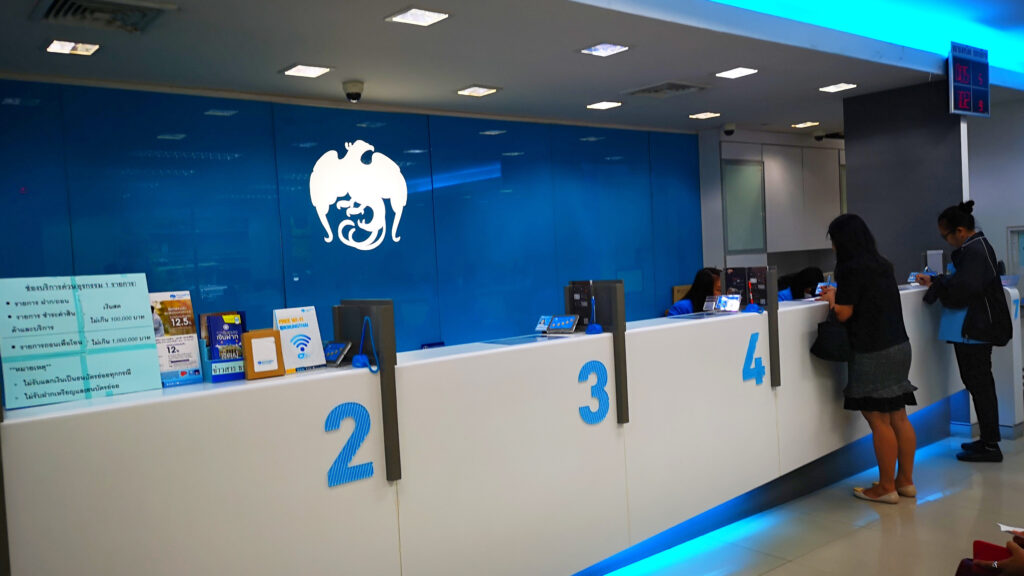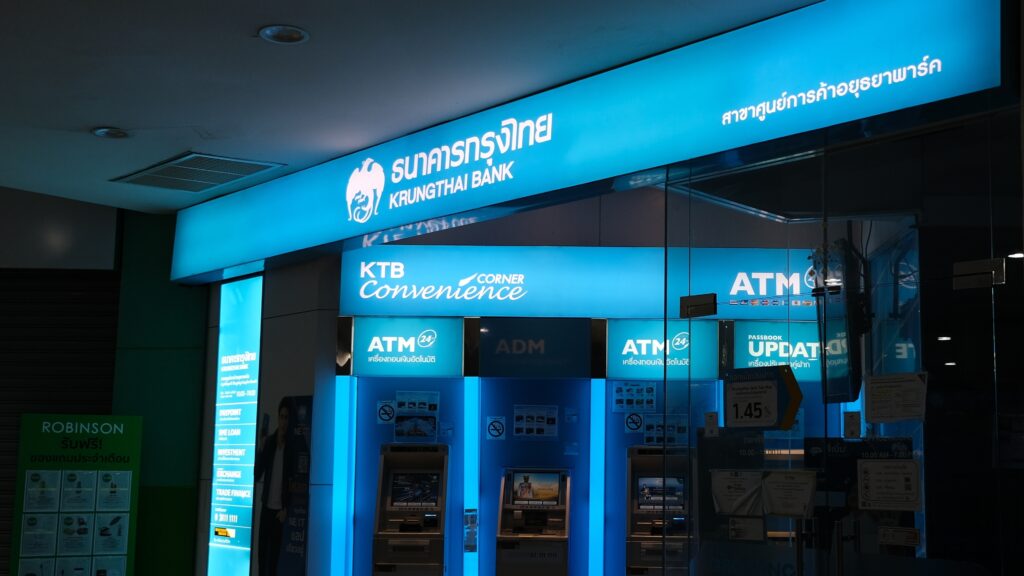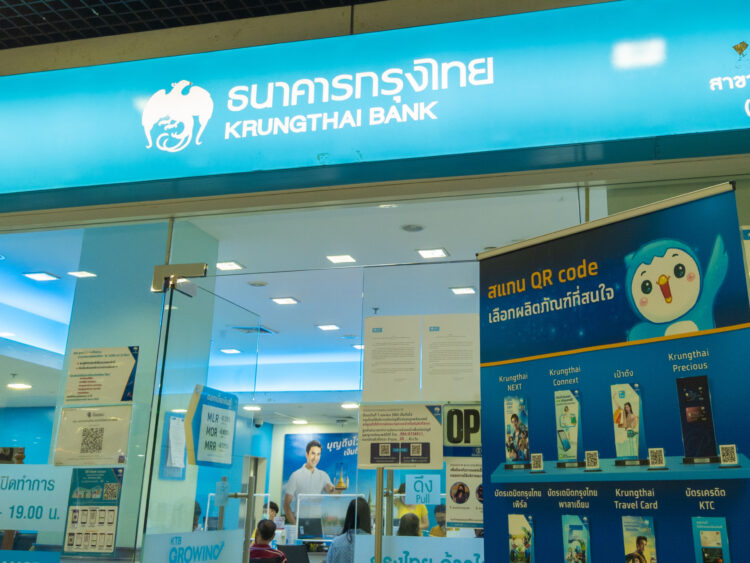Krishnasorn Ansvananda is the CEO of Krung Thai Computer Services Co., Ltd. (KTCS), which is affiliated with Krung Thai Bank. KTCS is a long- and well-established subsidiary of Krung Thai Bank Public Company Limited and is recognized as a leading IT Service provider in the banking industry and government agencies.
Ansvanada explains his technology strategy to help navigate KTCS through the pandemic, and what the technology roadmap will look like, as Krung Thai Bank and others in the financial sector look to deliver greater innovation.
“Pre-pandemic, Thai companies were trying to make their operations more efficient through digital transformation,” he says, “and leveraging technology to provide new products to end users. The pandemic accelerated this digital transformation both internally and externally.”

“Before the pandemic, we were a more traditional type of business,” he says, “it was expected that employees would come into the office, almost 100%.”
COVID-19 effectively shut down that model, says Ansvananda. “We were immediately tasked with using all the technology at our disposal. It was an unprecedented scenario.”
“People got used to it very quickly,” he says. “And post-pandemic, they preferred to come back to the office based on personal schedules, and this was a big change for us. Now, approximately 50% of our staff works from home but we don't see any drawbacks, because it's efficient.”
Moving to the cloud
While banks are moving toward new technology, there are legacy systems that are hard to move away, says Ansvananda. “We moved to public cloud about three or four years ago and experimented with private cloud around the same time.”

‘We appreciated the flexibility that cloud offers, but Krung Thai is a state-owned bank so there were regulatory concerns,” he says. “This was a prime factor in the development of our private cloud: control.”
This was a prime factor in the development of our private cloud: control.
The choice of which flavour of cloud to choose for specific tasks depends on external factors, he says. “For example, with some analytics that requires functions we don't have on our private cloud, we’ll go to the public cloud. But for tasks requiring a VM, containers, or Kubernetes, we have those functions on our private cloud, so we don't want to put it on the public cloud.”
“Right now, we have approximately three or four hundred internal applications,” says Ansvananda. “Anything we can move to the cloud, we will move to the cloud, but since we have a lot of applications, this will take years. We must examine each application independently.”
For older applications, he says, “We might just leave it on the legacy system for some time, but in the meantime, talk to the business about a replacement for that application, which will likely be cloud-suitable. So, you wait, do nothing, the old app gets de-commissioned, and then you have the replacement application in the cloud already.”
Re-architecting applications
In 2023, banks face the challenge of legacy applications that may or may not require re-architecting to fit with present requirements.
Another option, he says, is to move the older app as a VM to the cloud. The KTCS CEO says that his firm moved about 40 applications to the cloud last year, with more to follow in 2023. “But it’s up to the application team,” he says. “They must evaluate each application and decide how to proceed in the way that they think is best for the application.”
Super app
Ansvananda says that for Southeast Asia banks, including Thai banks, banking is more comprehensive relative to the West. “A bank in the other regions, for example,” he says, “offers a narrower line of products for consumers. You can check your credit card balance, transfer funds, and do relatively simple tasks.”
The Southeast Asian experience is more comprehensive, says Ansvananda. “Our app is more like a super app,” he says. “You can buy bonds or apply for a loan. You have a lot of insight on our app.”
There’s a lot of technology going on behind the scenes. We’ve invested heavily to bring these bleeding edge services to our customers.
He says that many banks in Thailand offer such services. “There’s a lot of technology going on behind the scenes,” he says. “We’ve invested heavily to bring these bleeding edge services to our customers.”
The AI question
Ansvananda says that while the current buzzwords of AI and ChatGPT command the headlines, he views these technologies in a different light. “My main interest in AI at the moment is as a technology that can help predict the failure of my operations.”
He explains: “If an AI technology can evaluate my system, perhaps it can isolate weak segments and predict what items should be upgraded or expanded to make sure that the system won't fail shortly.
“If an AI can predict how to make my operations more stable, that is something I'm interested in,” he says.
Open-source journey
Ansvananda says his firm built its private cloud using open-source technology. “The private cloud represents one of our key infrastructure projects,” he says, “and in running our bank operations, we need a certain level of support.”
The KTCS CEO says that his company partnered with Red Hat to build critical applications. “Of course, we need support during operations,” he says, “but we also needed advice on open source before the implementation, and we were satisfied with what Red Hat provided.”
He adds that deploying open source helps alleviate the concern of vendor lock-in, and possible attendant costs. Typically, says Ansvananda, tech decisions start with consideration of business needs and work backwards towards technological solutions.
“The direction that we look at the business side, and then we work that back into what we want to do, and then try to achieve.”
“We wanted to build a private cloud because we have a lot of applications that have to go to the cloud, but we can’t sustain that on public cloud,” he says. “We need to maintain control of some of our applications.”

* Editor's notes: This article is part of the Cxociety Coffee Table Book project (The Project) which chronicles the journey and experiences of senior business, operations, finance and technology leaders in Asia in recent years. The Project illustrates the tenacity, ingenuity and resiliency of the human spirit in the face of seemingly endless challenges.
With nearly 50 stories chronicled in The Project, it is a must-read compendium of learnings and experiences from seasoned professionals in the region.





